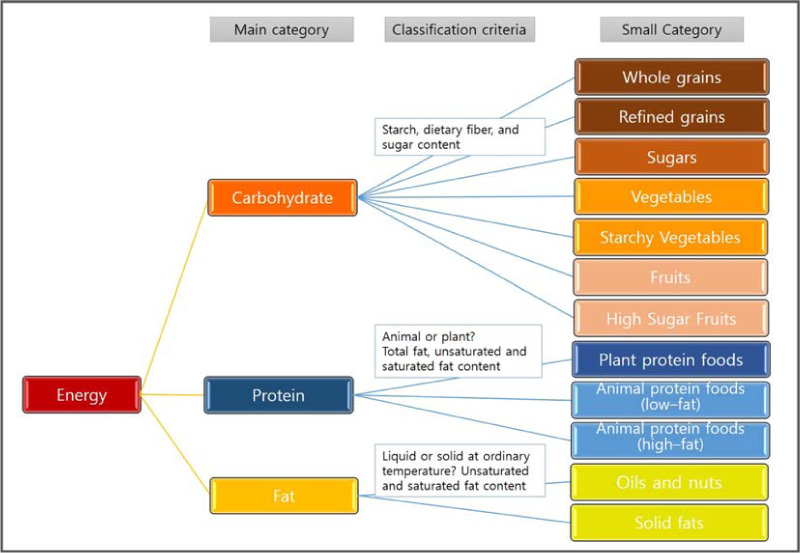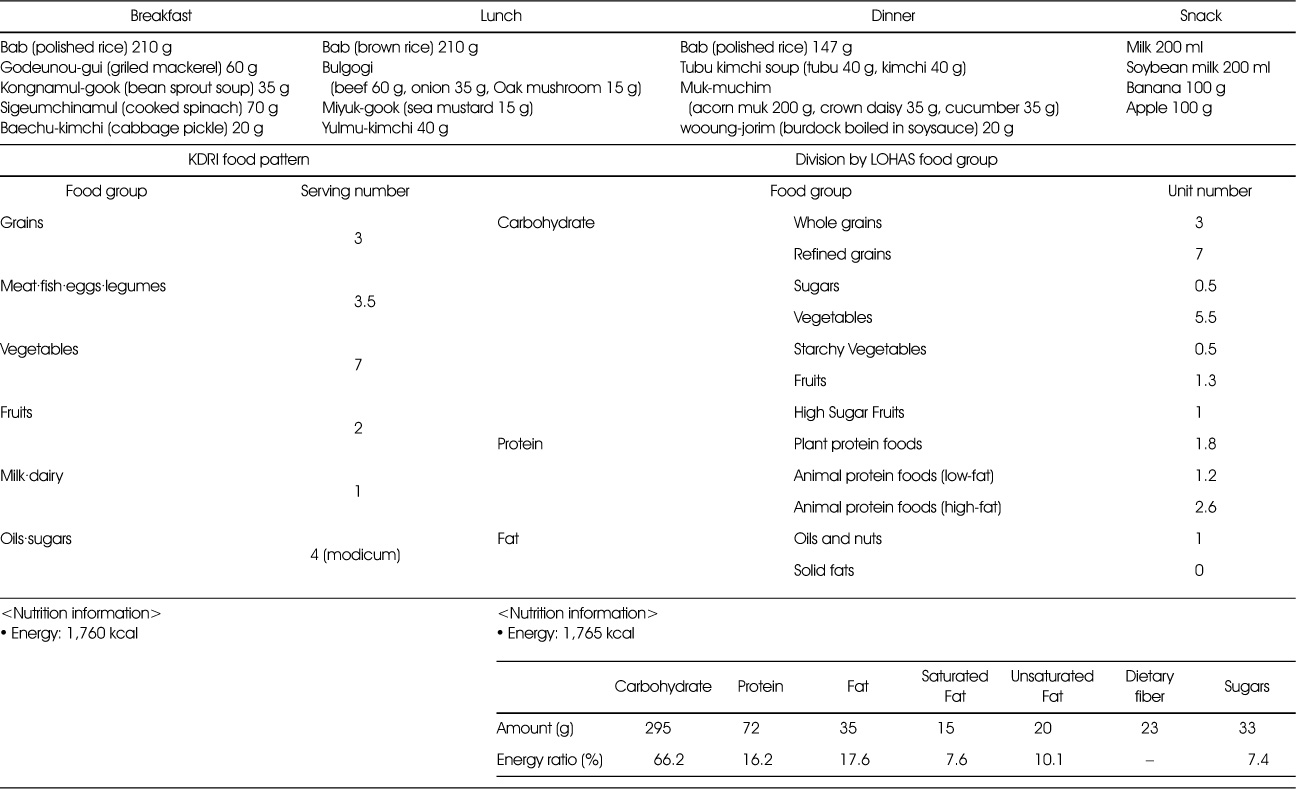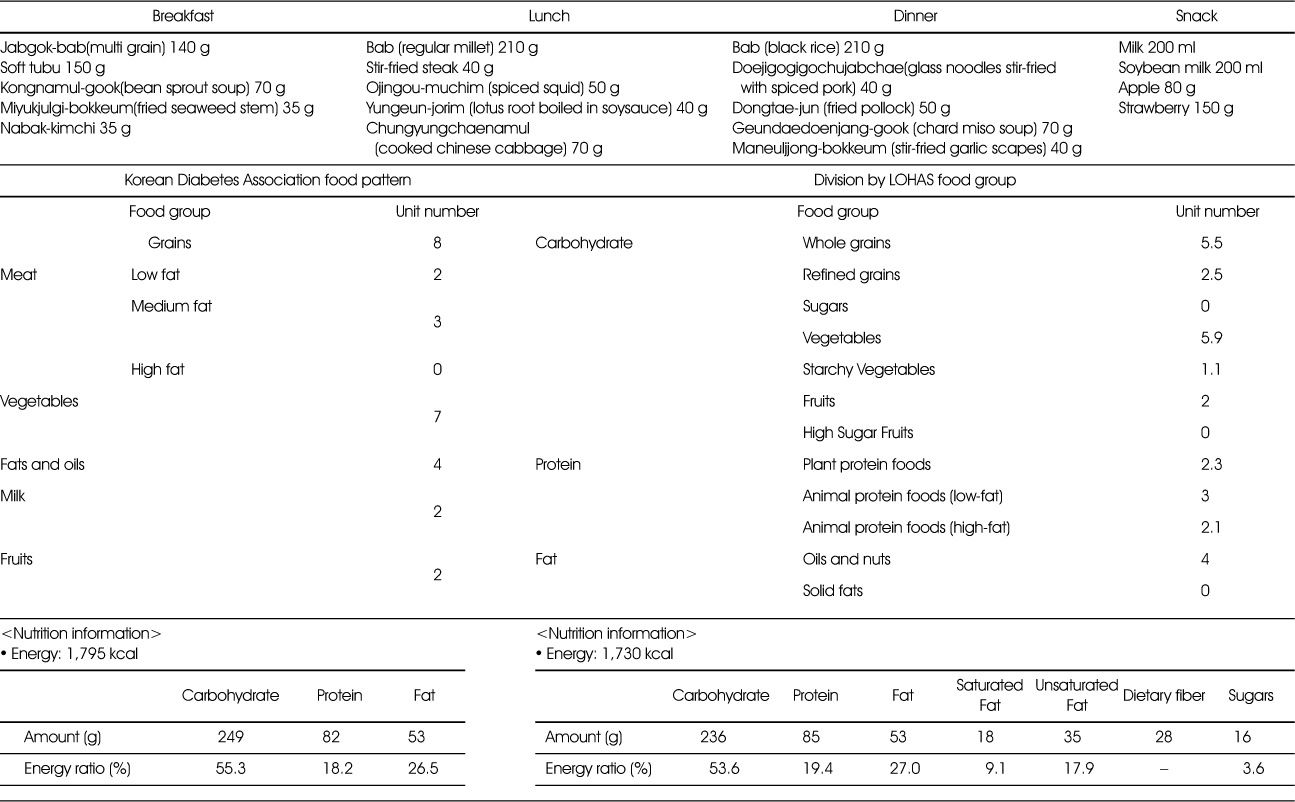References
3. Lee J, Shin AS. Vegetable and fruit intake in one person household: The Korean National Health and Nutrition Examination Survey (2010~2012). J Nutr Health 2015;48(3):269–276.
4. Choi MK, Bae YJ. A study on blood lipids and blood pressure of adult men and women according to vegetable intake. Korean J Community Nutr 2007;12(6):761–772.
5. Kim SJ, Choi MK. Factors associated with fruit and vegetable consumption of subjects having a history of stroke: Using 5th Korea National Health and Nutrition Examination Survey (2010, 2011). Korean J Community Nutr 2014;19(5):468–478.
6. Song S, Paik HY, Song YJ. The relationship between intake of nutrients and food groups and insulin resistance in Korean adults: Using the Fourth Korea National Health and Nutrition Examination Survey (KNHANES IV, 2007-2009). Korean J Nutr 2013;46(1):61–71.
7. Lee HS, Kwon SO, Yon MY, Kim DH, Lee JY, Nam JW, et al. Dietary total sugar intake of Koreans: Based on the Korea National Health and Nutrition Examination Survey (KNHANES), 2008-2011. J Nutr Health 2014;47(4):268–276.
8. Ko YS, Kim EM, Chae IS, Lee HS. A study of total sugar intake by middle school students in Jeju province. J Nutr Health 2015;48(3):248–257.
9. Ministry of Health & Welfare. The Korean Nutrition Society. Ministry of Food and Drug Safety. Dietary reference intakes for Koreans 1st revisionth ed. Seoul: The Korean Nutrition Society; 2010. p. 531.
10. Ministry of Health & Welfare. The Korean Nutrition Society. Dietary reference intakes for Koreans 2015 Sejong: Ministry of Health & Welfare; 2015. p. 939.
11. Korean Diabetes Association. Korean food exchange lists for diabetes 3rd edth ed. Seoul: Gold' Planning and Development; 2010. p. 1–64.
12. Ahn Y, Bae JH, Kim HS. Development of web-based u-Health self-nutrition management program for diabetic patients. Korean J Community Nutr 2014;19(4):372–385.
13. Hong SM, Cho JY, Lee JH, Kim G, Kim MC. NutriSonic web expert system for meal management and nutrition counseling with nutrient time-series analysis, e-food exchange and easy data transition. Nutr Res Pract 2008;2(2):121–129.
14. Ju DL, Jang HC, Cho YY, Cho JW, Yoo HS, Choi KS, et al. Korean food exchange lists for diabetes: revised 2010. Korean J Nutr 2011;44(6):577–591.
15. National Institute of Agricultural Sciences. Rural Development Administration. Food composition table 8th revisionth ed. Wanju-gun: National Institute of Agricultural Sciences. Rural Development Administration; 2011.
16. The Korean Nutrition Society. CAN-Pro 4.0 CD Seoul: The Korean Nutrition Society; 2011.
17. U.S. Department of Agriculture. USDA food composition databases [internet] U.S. Department of Agriculture Agricultural Research Service; 2013. cited 2018 Apr 25. Available from:
https://ndb.nal.usda.gov/ndbhttps://ndb.nal.usda.gov/ndb.
18. Song S, Choi HN, Lee SY, Park JM, Kim BR, Paik HY, et al. Establishing a table of glycemic index values for common Korean foods and an evaluation of the dietary glycemic index among the Korean adult population. Korean J Nutr 2012;45(1):80–93.
19. U.S. Department of Agriculture. U.S. Department of Health and Human Services. Dietary guidelines for Americans 2010 7th edth ed. Washington, DC: U.S. Government printing office; 2010. p. 59–94.
20. Natural Marketing Institute. Understanding the LOHAS consumer report - A focus on energy efficient electronics and appliances Natural Marketing Institute; 2000.
22. Kang HJ, Kim KJ, Kim I. A study on the menu planning program by food exchange group. Korean J Nutr 1998;31(7):1192–1205.
23. Choi J, Moon HK. Nutrients and dish intake by fasting blood glucose level. Korean J Nutr 2010;43(5):463–474.
24. Lee Y, Kim MY, Chung HK, Kim HR, Shim JB, Cho HY, et al. Evaluation of traditional aspects of school lunch menus in Korea by analyzing dish group composition. Korean J Community Nutr 2013;18(4):386–401.
25. Hong H, Lee JS. The relationship between food and nutrient intakes, glycemic index, glycemic load, and body mass index among high school girls in Seoul. Korean J Nutr 2010;43(5):500–512.
26. Kim SH, Chung HK. Sugar supply and intake of Koreans. Korean J Nutr 2007;40Suppl. :22–28.
27. Park YK, Lee YJ, Lee SS. The intake of food and nutrient by the elderly with chronic disease in the Seoul area. Korean J Nutr 2012;45(6):531–540.
28. Ministry of Health & Welfare. Korea Health Promotion Foundation. Health plan 2020 (2016-2020) Seoul: Korea Health Promotion Foundation; 2015.
29. Suh YS, Park MS, Chung YJ. An evaluation of chronic disease risk based on the percentage of energy from carbohydrates and the frequency of vegetable intake in the Korean elderly: Using the 2007-2009 Korea National Health and Nutrition Examination Survey. Korean J Community Nutr 2015;20(1):41–52.
30. Kim JY, Kim OY, Yoo HJ, Kim TI, Kim WH, Yoon YD, et al. Effects of fiber supplements on functional constipation. Korean J Nutr 2006;39(1):35–43.
31. Lee HJ, Kim YA, Lee HS. Annual changes in the estimated dietary fiber intake of Korean during 1991-2001. Korean J Nutr 2006;39(6):549–559.
32. Ryu JH, Yim JE, Suk WH, Lee HSY, Ahn HJ, Kim YS, et al. Sugar composition and glycemic indices of frequently consumed fruits in Korea. Korean J Nutr 2012;45(2):192–200.
33. Youn HJ, Han YH, Hyun TS. Amounts and food sources of nutrients of elementary school lunch menus by the type of foodservice and the percent energy from fat. Korean J Community Nutr 2007;12(1):90–105.
34. Lee HY, Kim YN. Revision and application of the target pattern in food guidance system: Administered to 2nd grade middle school students. Korean J Community Nutr 2014;19(3):274–282.
35. Park MJ, Kim YN. Proposition and application of a dish-based target pattern for Korean adolescent girls. Korean J Community Nutr 2015;20(2):87–95.







